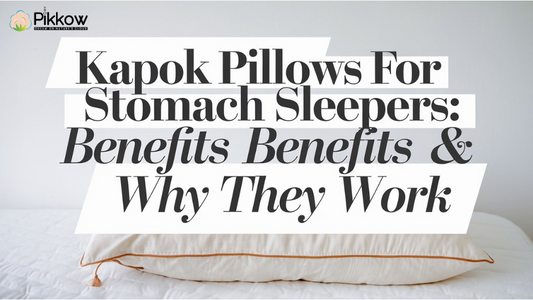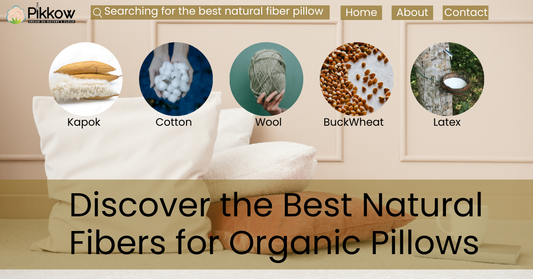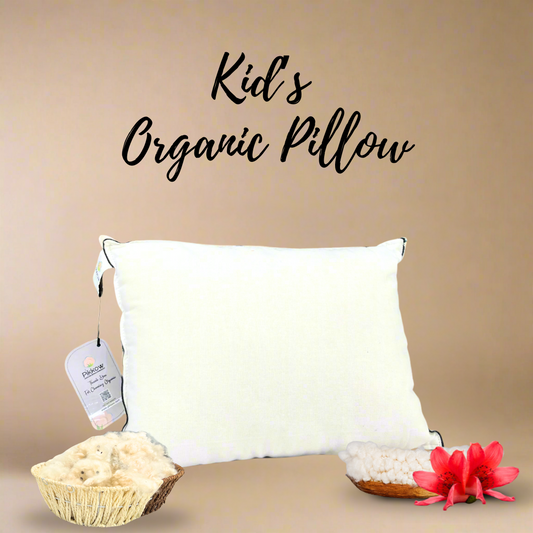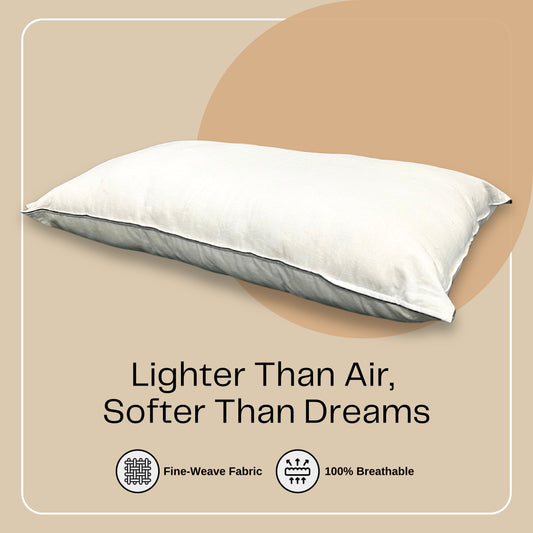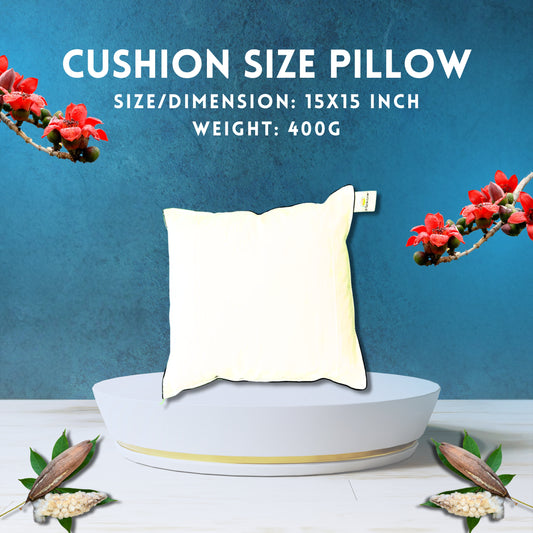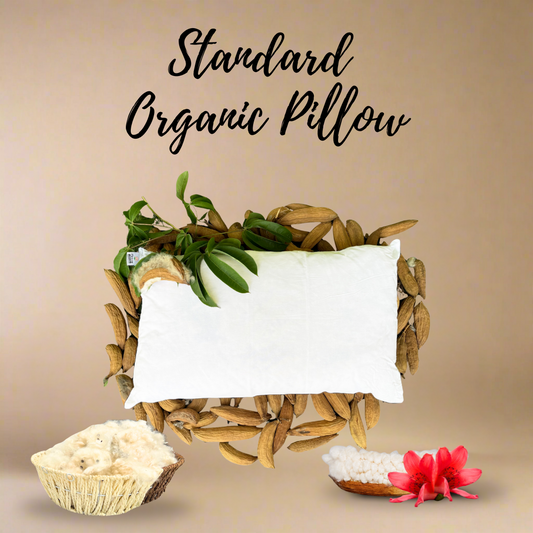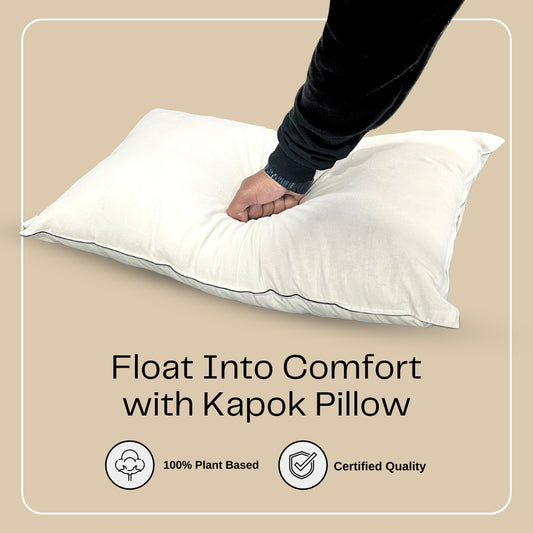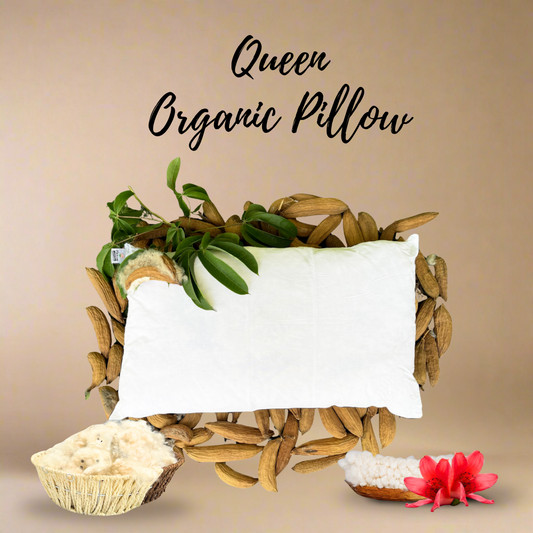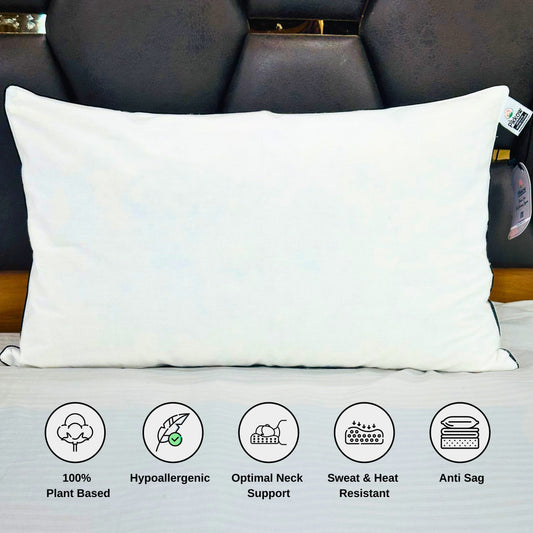Choosing the right pillow can significantly impact your sleep quality. If you've been comparing kapok pillows vs feather pillows, you're not alone. Many people are rethinking their pillow choices due to health, comfort, and environmental concerns.
So, are kapok pillows better than feather pillows? In this expert-backed guide, we’ll explore the materials, benefits, and differences to help you decide whether to choose kapok pillows or feather pillows for your best night’s sleep.
What Are Kapok Pillows?
Kapok pillows are filled with natural fibers extracted from the seed pods of the kapok tree. This silky, cotton-like fiber is:
- 100% plant-based and biodegradable
- Naturally hypoallergenic and chemical-free
- Soft, breathable, and lightweight
- Vegan and eco-friendly
Kapok pillows provide a plush yet supportive feel, making them a great alternative to down or feather pillows—without the animal products.
What Are Feather Pillows?
Feather pillows are made from the outer feathers of ducks or geese. They’ve been used for centuries and offer a soft, moldable feel. However, they come with drawbacks such as:
- Can trigger allergies due to feather dust
- May flatten or clump over time
- Often require constant fluffing
- Can leak sharp feather quills
- Not suitable for vegan lifestyles
While they feel luxurious at first, feather pillows may not provide long-term comfort or support for modern sleepers.
Kapok Pillows vs Feather Pillows: Comparison Table
|
Feature |
Kapok Pillows |
Feather Pillows |
|
Material |
Plant-based kapok fiber |
Duck or goose feathers |
|
Hypoallergenic |
Yes |
No |
|
Sustainability |
Eco-friendly, renewable, and biodegradable |
Less sustainable, animal-derived |
|
Odor |
Naturally odor-free |
May develop a musty smell |
|
Support & Loft |
Medium to high support, retains shape |
Compresses easily, less support over time |
|
Maintenance |
Easy to fluff, low odor retention |
Needs frequent fluffing |
|
Vegan-Friendly |
100% Vegan |
Not vegan or cruelty-free |
|
Durability |
Long-lasting loft and shape |
Flattens and deteriorates with use |
If you're weighing the choice between kapok pillows or feather pillows, the table clearly shows that kapok is a superior option in most categories.
How Kapok Pillows Are Better Than Feather Pillows
Here’s a breakdown of how kapok pillows are better than feather pillows in comfort, performance, and sustainability.
1. Health Benefits
- Naturally hypoallergenic
- Resistant to dust mites and mold
- Chemical-free and safe for sensitive skin
- Great for asthma and allergy sufferers
2. Superior Support
- Offers medium to firm support
- Retains shape without clumping
- Reduces neck and back pain
- Ideal for back and side sleepers
3. Eco-Friendly and Ethical
- Harvested from trees without cutting them down
- Completely biodegradable and sustainable
- No animal cruelty or environmental harm
- Ideal for eco-conscious consumers
4. Odor and Moisture Control
- Breathable and moisture-wicking
- Doesn’t retain sweat or odors
- Stays fresh for longer periods
5. Maintenance and Durability
- Easy to maintain with occasional fluffing
- Long-lasting loft and comfort
- Typically comes with washable outer covers
Thanks to these qualities, it’s easy to see how kapok pillows are better than feather pillows, especially for today’s health- and earth-conscious consumers.
Kapok Pillows or Feather Pillows: Which One Should You Choose?
Still unsure whether to choose kapok pillows or feather pillows? Let’s simplify your decision based on lifestyle and sleep preferences.
Choose Kapok Pillows If You:
- Have allergies or asthma
- Prefer cruelty-free and vegan bedding
- Want long-lasting shape and support
- Care about sustainability and eco-impact
- Need better airflow for hot sleepers
Choose Feather Pillows If You:
- Prefer a soft and moldable feel
- Don’t have allergies or sensitivity to feathers
- Are okay with frequent fluffing
- Don't mind animal-derived materials
Overall, most experts recommend kapok pillows as a healthier, cleaner, and more comfortable choice for long-term use.
Sleep Expert’s Final Verdict
From a sleep expert’s perspective, the answer is clear—kapok pillows are better than feather pillows in almost every way. They offer enhanced support, last longer, and align with both health and environmental values.
Feather pillows may have a classic charm, but they fall short in hygiene, durability, and ethical sourcing. If you're investing in better sleep, kapok pillows are the smarter, modern choice.
Conclusion
If you’ve been debating kapok pillows vs feather pillows, it’s time to make the switch. Kapok offers everything today’s sleepers need—comfort, sustainability, hypoallergenic benefits, and long-term performance.
Still wondering how kapok pillows are better than feather pillows?
Here’s a quick recap:
- Naturally hypoallergenic and breathable
- Eco-friendly and vegan
- Retains shape and supports your spine
- Lasts longer without clumping or odo
- A guilt-free, luxurious sleep upgrade
So the next time you’re shopping for a new pillow, remember: Kapok pillows are better than feather pillows—hands down.
FAQs
1. Are kapok pillows better than feather pillows for allergies?
Yes. Kapok pillows are naturally hypoallergenic and ideal for people with allergies, asthma, or sensitive skin.
2. Do kapok pillows last longer than feather pillows?
Kapok pillows retain their shape and loft longer, while feather pillows flatten and require frequent fluffing.
3. Can kapok pillows help with neck pain?
Absolutely. Kapok offers consistent support and conforms to your head and neck, promoting better spinal alignment.
4. How do you care for a kapok pillow?
Kapok pillows usually come with removable, washable covers. The inner fill can be fluffed or replaced as needed.
5. Are kapok pillows eco-friendly?
Yes. Kapok is sustainably harvested from trees, biodegradable, and vegan, making it an excellent choice for eco-conscious users.


